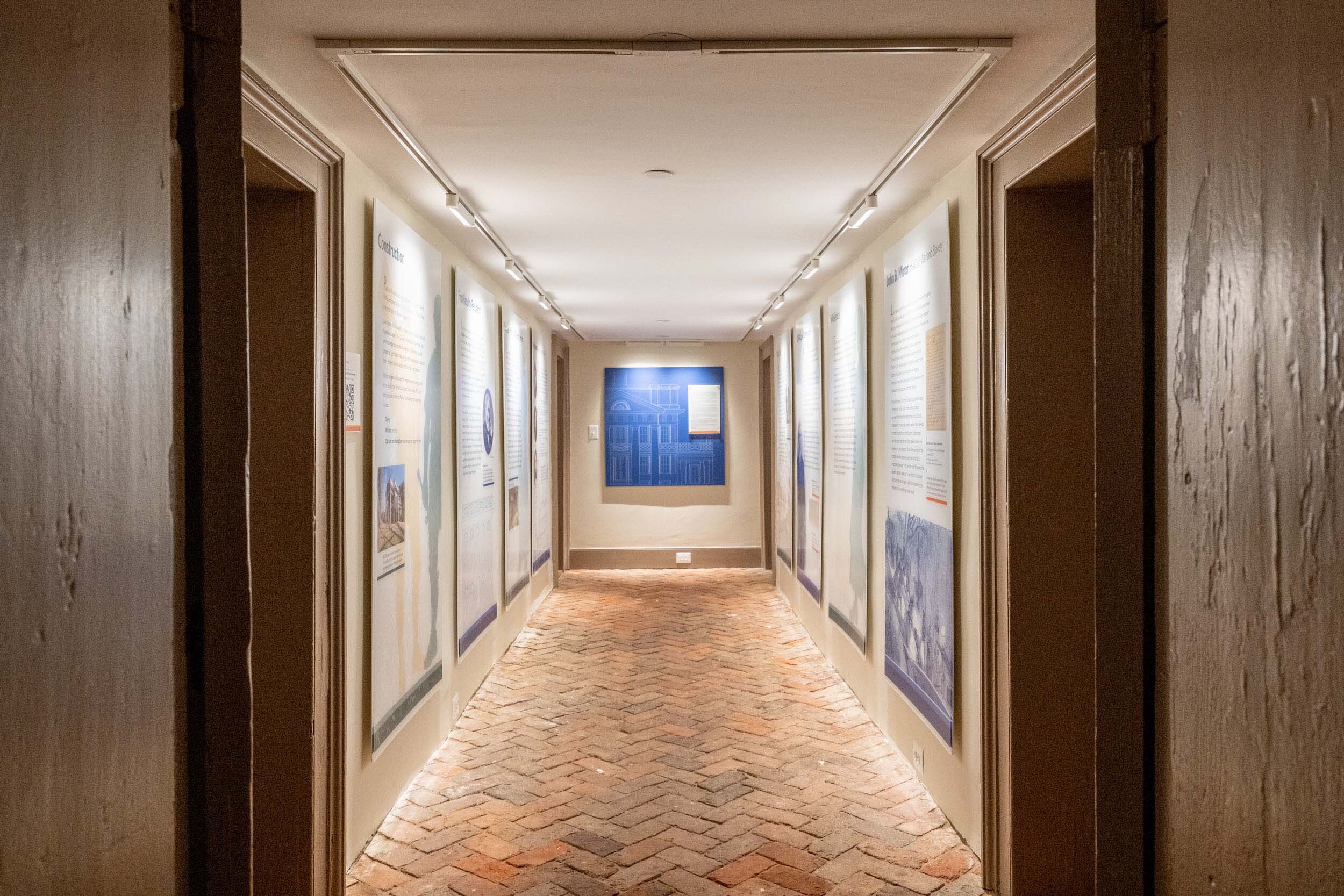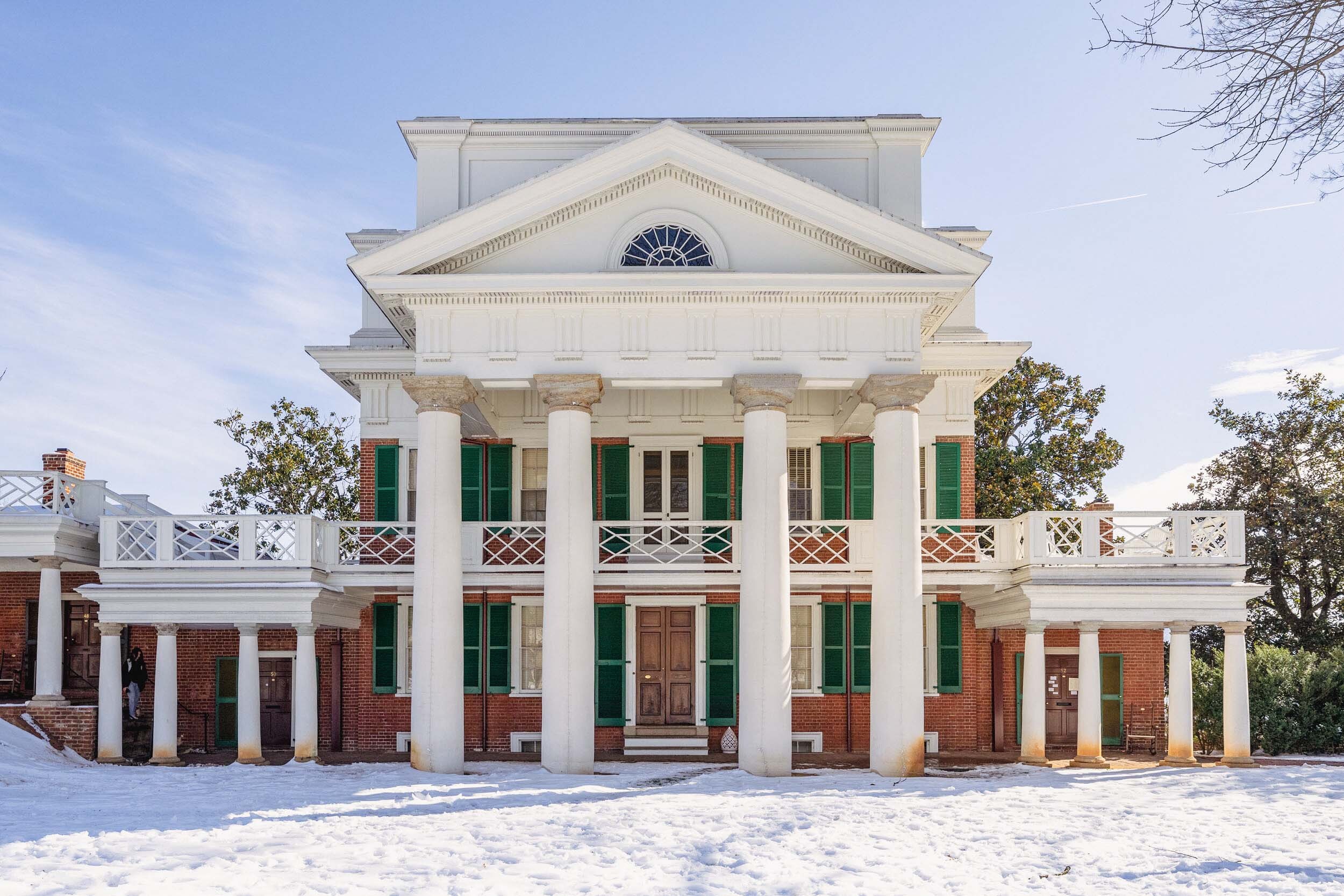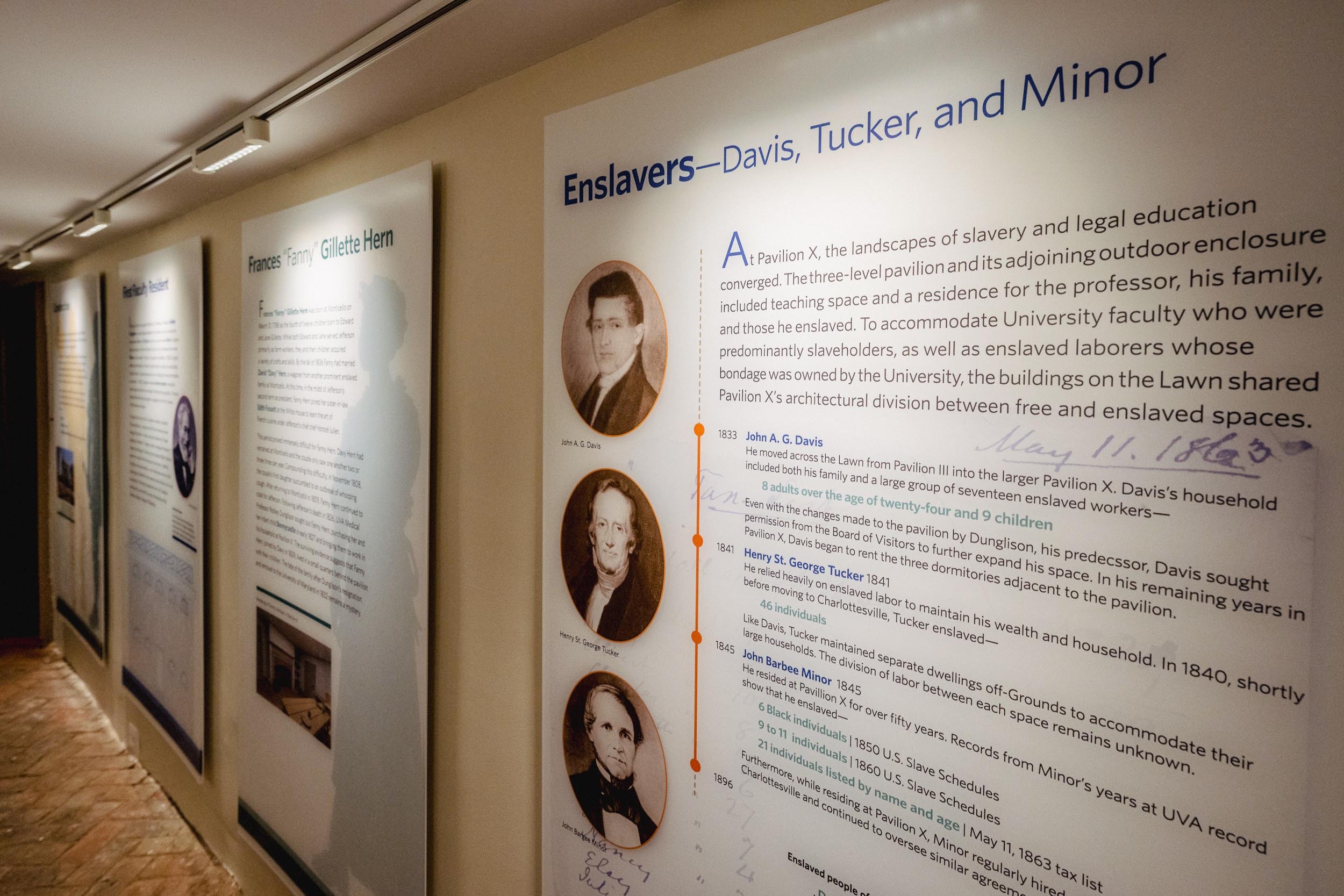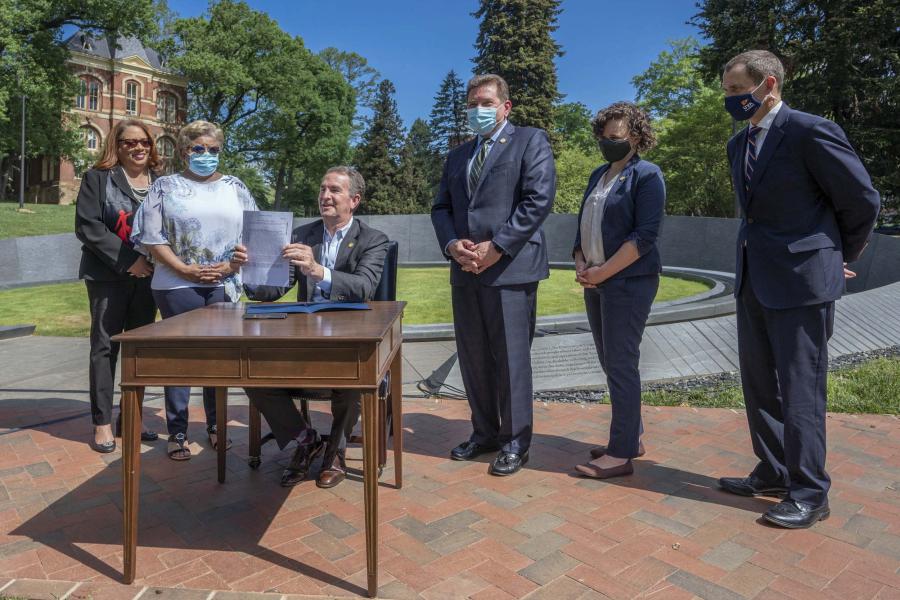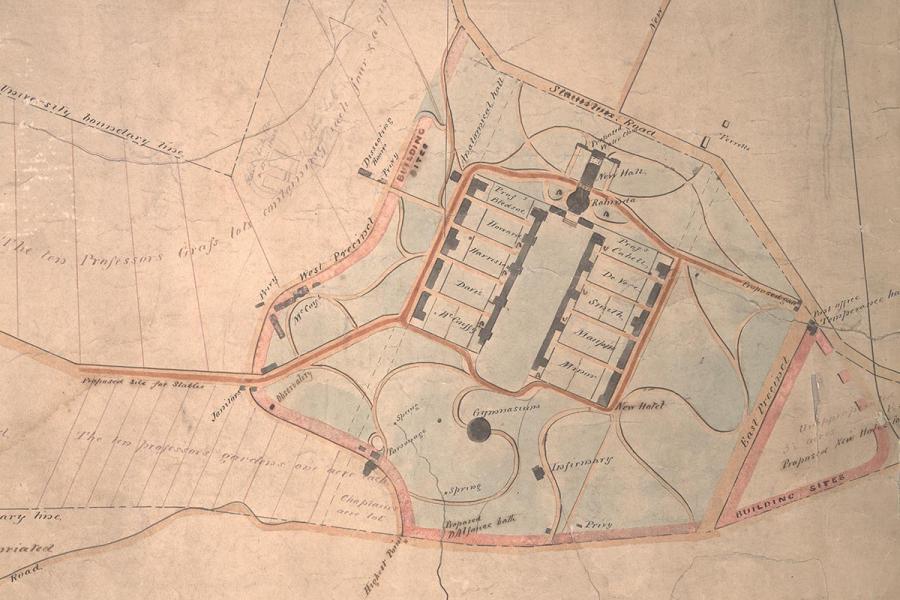Speaking a few days before the open house, Solomon said, “We need to have the courage to acknowledge the truth about slavery in UVA’s history and how it might have affected the people whose history has been ignored or forgotten or erased. We need to have the courage to tell the truth, to engage with evidence and facts, to have honest reflection about real life. We want our students to be able to do this, too.”
Old Sam and Young Sam were among enslaved carpenters who records show worked on building several other pavilions.
More information has been retrieved about Frances “Fanny” Gillette Hern. Another panel tells that she was born in bondage at Monticello and cooked for Thomas Jefferson, including at the White House when he was president. At that time, she had to leave behind her husband Davy, a wagoner at Monticello. After Jefferson’s death, Dunglison, the University’s first medical professor, purchased Fanny Hern to cook at Pavilion X. Evidence suggests she and Davy and their children lived behind the pavilion, but what happened to them when Dunglison left UVA in 1832 for University of Maryland is still unknown.
The names of the Hern family were added to the University’s Memorial to Enslaved Laborers about a year ago.
After Dunglison, four professors – all in law – occupied Pavilion X consecutively for more than 100 years, from 1833 to 1936, the first three of whom were enslavers: John A.G. Davis, Henry St. George Tucker and John B. Minor. (The fourth was William Minor Lile).
Minor moved into Pavilion X in 1845 and lived there for 50 years. His 1863 tax records contained a list of 21 individuals considered property, about half of them children.
As a panel points out, all four of the law professors spread discredited ideas about racial hierarchy and tried to justify slavery in their teaching.
Much of the panels’ content was newly developed for this exhibition, Nelson wrote in an email. Minor’s tax records, for example, came from archival material in the Minor and Wilson Family Papers in the Albert and Shirley Small Special Collections.
History professor Kirt von Daacke, who co-chaired the President’s Commission on Slavery and the University, led a research team with history doctoral students Ian Iverson, who wrote and edited the content for the panels, and Joshua Morrison, who finished his Ph.D. and is now a post-doctoral fellow at Columbia University, where he works on that institution’s slavery project.
Meggan Cashwell, Randi Flaherty and Addison Patrick, of the UVA Law Library Special Collections team, partnered with Iverson to research and draft the exhibit text. Worthy Martin and Lauren Massari of UVA’s Institute for Advanced Technology in the Humanities formatted the Pavilion X exhibit and artist Anne Chestnut designed it.
Nelson said the team reviewed the entire exhibition with the Descendants of Enslaved Communities at UVA before production. “They reviewed it and offered some good feedback that we incorporated before completion. This review included also descendants of the individuals named in the exhibition.”
Solomon said, “This is part of educating people. My hope is that they grapple with this history, and we jointly figure out what it means for us as a public university.”
Or, as he wrote on the exhibit panel: “I hope you will see history as an unfolding process of discovery and understanding in which each of us plays a part. Their stories – our shared stories – are still being written as we work to cure our defects and fulfill America’s founding promise of freedom and equality.”
